WORLD TRAVEL NEWS ARTICLE
KYTHIRA, GREECE
Kythira is an isolated island with a healthy disdain for the tourist industry, which makes it the perfect refuge for the package holiday weary traveller. It’s an island that offers much –astonishing deserted beaches, old legends, lovely little towns and the traditional way of island life. The island lies right at the point where the Aegean meets the Ionian Sea and so it’s actually closer Crete than its closest Ionian neighbour, Zakynthos.

Kapsali on Kythira
To get the most out a trip to Kythira you will need to hire transport as the public transport on the island is virtually non-existent.
History
According to Greek Mythology, Kythira was the birthplace of the goddess of love; the legendary Aphrodite.
At the start of the second millennium BC Kythira was a Minoan colony and stayed that way until 424 BC when it was taken on by Athens. Over the centuries the little island has proved popular, it has been conquered by the Romans, Byzantines, Venetians and Turks, and it was frequently picked on as an easy target by marauding pirates.
The looting and destruction of the town of Paliochora by the pirate Barbarossa in the 16th century have become part of Kytherian folklore. After a long period of Venetian rule the island fell to France in 1797, then subsequently to Russia and Turkey from 1799 to 1807, then back to France, and finally to the British.
On May 21, 1864, the island was united with Greece and became part of the First Hellenic Republic.
At the start of the 20th century, emigration from the island to Australia and America started to ramp up, and the population diminished. During the First World War, Kythira fought with the Allies, and many Kytherians also took part in the National Resistance during the Second World War. The island was occupied by the Germans and the Italians in 1941, but they were ousted in 1944 and in fact Kythira was the first part of Greece to be freed. After the war Kythira was pretty impoverished, and as a result many of the island’s young people started to head to Athens, Australia and the United States in search of a better life.
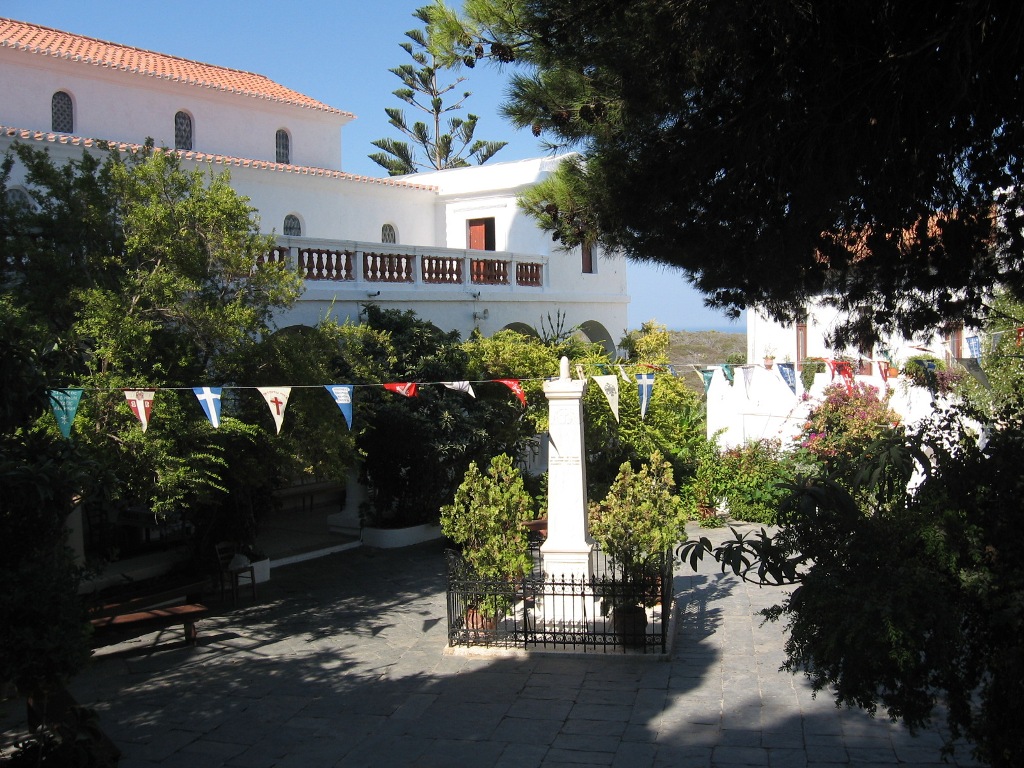
Mertidiotisa - Kythira
Getting There
Olympic Airways operates flights to Kythira airport from Athens on a daily basis. The airport is around 8 kilometres south of Potamos but there is no public transport to or from the airport.
There are ferries twice a week from the mainland port of Piraeus and in the summer months there are regular ferry connections between Kythira and the Peloponnesian port of Gythio.
You can also catch the shuttle service which runs between Agia Pelagia, in the northeast corner of the island, and Neapoli in the Peloponnese. From June to mid-September you can take a Flying Dolphin from Piraeus to Kythira's newer, second port of Diakofti, located mid-way down the island's east coast.
Nightlife
Kythira really isn’t the place to go if you want to party it up, although it’s a charming island with lots of opportunities for romantic strolls and stops at little tavernas.
The island has many excellent tavernas that serve the locally caught fresh fish, and for later on there are some chilled out bars and cafes to relax in.
Shopping
Kythira isn’t a shopper’s paradise either, although the main towns and villages all have a selection of shops where you can pick up everyday necessities, souvenirs and groceries.
While you’re out and about, try and pick up some of the local produce, which can be absolutely delicious. Try some of the Fatourada – it’s a local liqueur infused with cinnamon and cloves. The island also produces some its own olives and speciality olive oils, or for a keepsake, look for a Sempreviva flower. Sempreviva means, ‘Live forever’, and the flower is a pretty yellow plant that looks as if it’s dried but it isn't. A bonus for people who have no luck with plants; it’s virtually indestructible and never needs watering. According to local tradition, the flowers are so rare that they are only allowed to be picked by a few people, and just once a year, in May.
Money
The Greek currency is the Euro. For the latest exchange rates visit www.xe.com You can exchange all foreign currencies at banks on the island, or bureaux de change, but keep an eye on the exchange rates as they tend to fluctuate from one bank to another. Greek banks charge a flat commission rate for cashing traveller's cheques, and you can avoid extra fees by taking them in Euros, Pounds Sterling or US Dollars.
Banks are generally open from 8:00am to 2:30pm Mondays to Thursdays, and close at 2:00pm on Fridays.
Where to go
Hora
Hora is the capital of Kythira, and it’s on the southern tip of the island, high on a high hill above the sea, with some magnificent views of Kapsali. Hora itself is in a steep two-kilometre climb up from Kapsali, but it’s worth the effort to see the Cycladic style white houses, all clustered on the hillside and crowned by the magnificent castle.
There are some spectacular views down to Kapsali harbour from Hora, and to the inaccessible islet of Avgo. According to legend, the goddess Aphrodite rose from the water here and made Kythira her home after the God Zeus cruelly castrated his father Cronos and cast him into the sea.
The little Cycladic style houses of the town share their location with buildings that reflect the island’s British and Venetian heritage, creating a pretty hotch-potch of picture perfect buildings that all seem to complement each other totally.
Hora is well set up for its visitors, and in the town you can also find a branch of the National Bank of Greece, a post office, some hotels, various rooms to let, a few shops, bars, and excellent tavernas.
Kapsali
The delightful harbour of Kapsali with its two bays is where you’ll set eyes on one of the most beautiful beaches on the island. The castle sits as a beacon on atop the rock, and for many years Kapsali has been pretty much the only place to go for a night out on the island. More tourist-centric than the rest of the island, there’s plenty to see and do here, and a good selection of bars, tavernas and cafes to stop in.
The town is situated in one of the most idyllic locations on the whole island, built around the protected port underneath the Venetian castle.
Kapsali is also a fully fledged marina – and some of the bigger Mediterranean cruises and small sightseeing and island hopping tours like to stop off here. The beach is a good one if you enjoy water sports, and the neighbouring beach at Sparagario is accessible on foot or by bike. Boat rides operate out to Avgo in the evenings, and you can even have a swim in the sea caves.
While you’re there, take in some history at the monastery of Saint John in Gremos. According to legend, this is where Saint John started writing Apocalypses before he travelled to Patmos.
Potamos
Potamos is the largest village in Kythira. It’s around 19 kilometres from Hora, and is the major commercial town of the island, with a market that’s a huge draw to tourists and islanders alike on a Sunday.
Despite being important commercially, the village still has a quiet, relatively unspoiled atmosphere. It’s perfect for a day out, especially if you’re a fan of old churches. Check out Byzantine church dedicated to Saint Theodore, the church of the Panagia (Virgin Mary) of Ilariotissa and the churches of Agios Ioannis, Agia Anastasia and the Saviour (Sotiros), all with beautiful icons and fine frescoes.
The village is well served with shops, hotels, restaurants and good tavernas. .Potamos also has a police station, hospital and pharmacy, a post office and a branch of the National Bank of Greece. The rocky beach at Agios Eleutherios is south of the town and a lovely place for a swim, or some great photos of the cliffs that surround it.
Agia Pelagia
Agia Pelagia is at the north of Kythira, 20 kilometres away from Chora. It was a sleepy fishing village until the 1950s but has since started to develop as a tourist attraction, especially since the 1980s. It’s a charming seaside holiday village that comes well stocked with hotels, restaurants and shops and easy access to some of the loveliest beaches on the island - Lorentso, Lagada and Firi Ammos.
It’s also near to the spectacular Agia Sofia cave which showcases some stunning stalagmites and stalactites, and Aphrodite’s cave in the Galani gorge. The one criticism of Agia Pelagia is that tourism has maybe take off a little too fast here and it’s perhaps slightly too commercialised for anyone looking for a real taste of quiet Greek island life. But on the upside, this means that there plenty of places to stay, as well as a lovely selection of restaurants, cafes and gift shops.
Livadi
Livadi is a great place to use as a base on the island, as there’s enough to see and do here to keep everyone happy, and it’s also the ideal location for trips out to some of the other interesting points of the island.
Livadi is on the south side of Kythira, about 10 kilometres north of Chora. The famous stone bridge of Katouni, with its 13 arches, was built here by the English in the 17th Century, and these days it’s one of the biggest tourist attractions on the island. In the area of Kato Livadi you can see the Byzantine Museum of Kythira, in the post-Byzantine church of the Assumption of the Virgin. It’s an interesting museum for anyone with a fascination for old religious icons and imagery, and features some beautiful religious paintings and murals dating from the early-Christian to the post-Byzantine era. There’s also a mosaic floor which was taken from the abandoned church of Agios Ioannis in Potamos.
Also definitely worth a visit is the English school, with its imposing Gothic style building, and the monasteries of Panagia Myrtidiotissa and Agia Elesa, as well as the church of Agios Andreas, which dates back to the ninth century.

Avlemonas
Avlemonas
The small coastal fishing hamlet of Avlemonas is on the eastern part of the island, around 26 kilometres from Chora, and is a naturally beautiful inlet with a delightful atmosphere and its own tiny Venetian castle.
The castle was built as a watchtower at the entrance to the port during the early 16th century. Now it’s a well visited tourist attraction that’s been seized upon by romantic couples as the ideal spot to take a moonlit walk.
The beach that dominates Avlemonas is ideal for swimming and for relaxing in the abundant sunshine, as the waters here are sparkling and clear. It’s popular with tourists and there are several places to stay, eat and drink.
Mylopotamos
Mylopotamos has to be one of the most beautiful medieval villages of Kythira. The village is divided into three settlements, called Kato Hora, Limionas and Agia Sophia and is set in a lush green valley that acts as something of a calm oasis in the summer months.
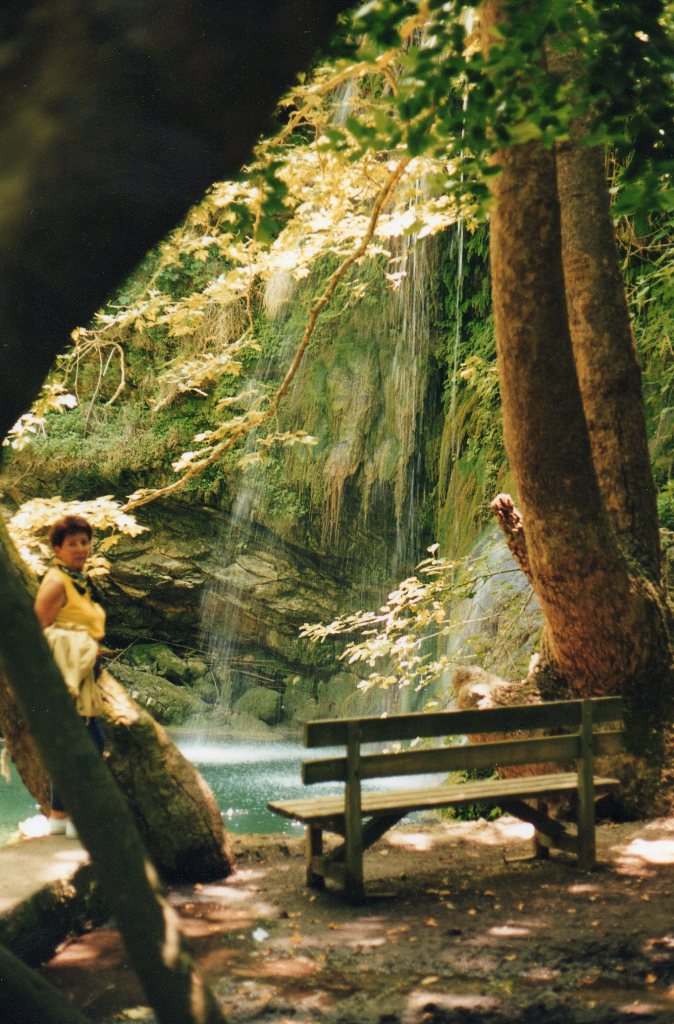
Mylopotamos
From Kato Hora, a beautiful stone paved road leads to the cliffs of Limionas, a gorgeous bay with fine white sand, while another road will take you from the centre of the medieval village to the cave of Agia Sophia. The cave’s entrance has been used as a church and has beautiful icons and religious art carved into the rock along with some Byzantine frescoes.
Nature has been kind to the village and there are some fantastic areas of natural beauty to take in too. The ravine that passes through Mylopotamos forms a small waterfall called Fonissa, and the area around here is well worth a stop off for some photos, a bite to eat at the restaurant near the waterfall or a coffee in the coffee shop.
Paleochora
The island's ruined medieval capital, Paleochora, occupies a breathtaking location on a hilltop at the head of a gorge with a sheer 100-metre drop on three sides.
The fortified town was built among the hills, intended to be invisible from the sea, so as to keep it hidden from opportunistic pirates. The plan didn’t quite come to fruition however, as it was spotted by the notorious pirate Barbarossa, and destroyed in 1537.
Paleochora really is worth seeing. It’s a perfect example of 13th century architecture that since it was looted by Barbarossa has never been reconstructed because it has (somewhat unsurprisingly) been considered to have been beset by bad luck!
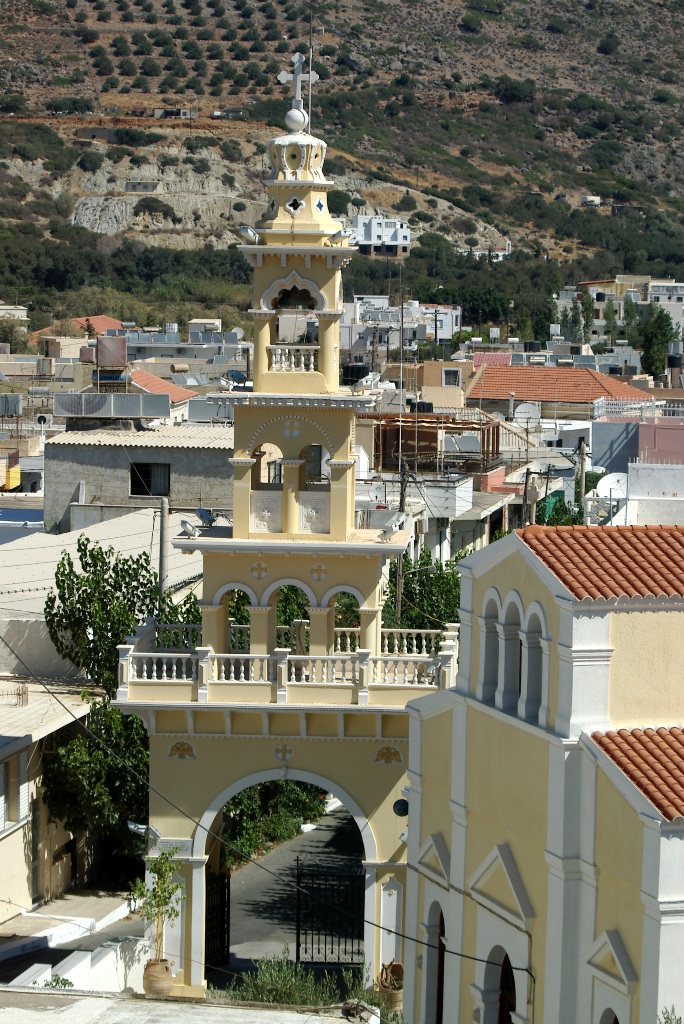
Paleochora's Byzantine church
The Fortress of Chora
This is the best preserved fortress on the island.
It was built in the 13th century and later renovated by the Venetians. In the castle you can see the old churches of Panayia Myrtidiotissa, Panayia Orfani, Pantokratoras and Agios Ioannis.

The fortess at Chora
The castle also still holds the Historic Archive of Kythera which is kept in the palace, as well as the old governor’s residency and ‘houses of nobles’. In the Mesa Vourgo settlement there are 14 churches. This is where the Sempreviva plant, which only grows in Kythira, is found – and only between the castle's rocks. The view from the castle itself is absolutely breathtaking.
Festivals
The peaceful island of Kythira isn’t a party centre, but the locals still know how to enjoy themselves and they enjoy putting on some lively festivals, especially in summer.
The most famous festival on the island is the celebration of Panagia. This takes place on August 15th in the main square of Potamos. The Panagia festival, as well as the other religious occasions, includes traditional Greek food, dancing and of course, plenty of drinking.
There’s also a carnival parade in Livadi village, held on the Sunday before Lent, and a popular wine festival on the first weekend of August in Mitata village with free wine, traditional music and dancing.
You may also like to read

CANADA - QUEBEC
Colin Nicholson keeps Tour-smart on the right track for a scenic gourmet treat.
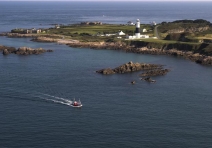
ALDERNEY - CHANNEL ISLANDS
Big is not always better as Tour-smart shows you when you read about the Channel Island of Alderney, which is just 3 kilometres wide and 5 kilometres long.
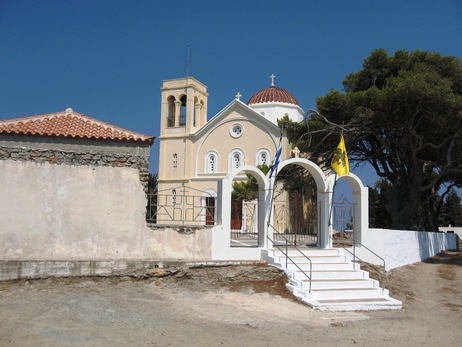
Comments